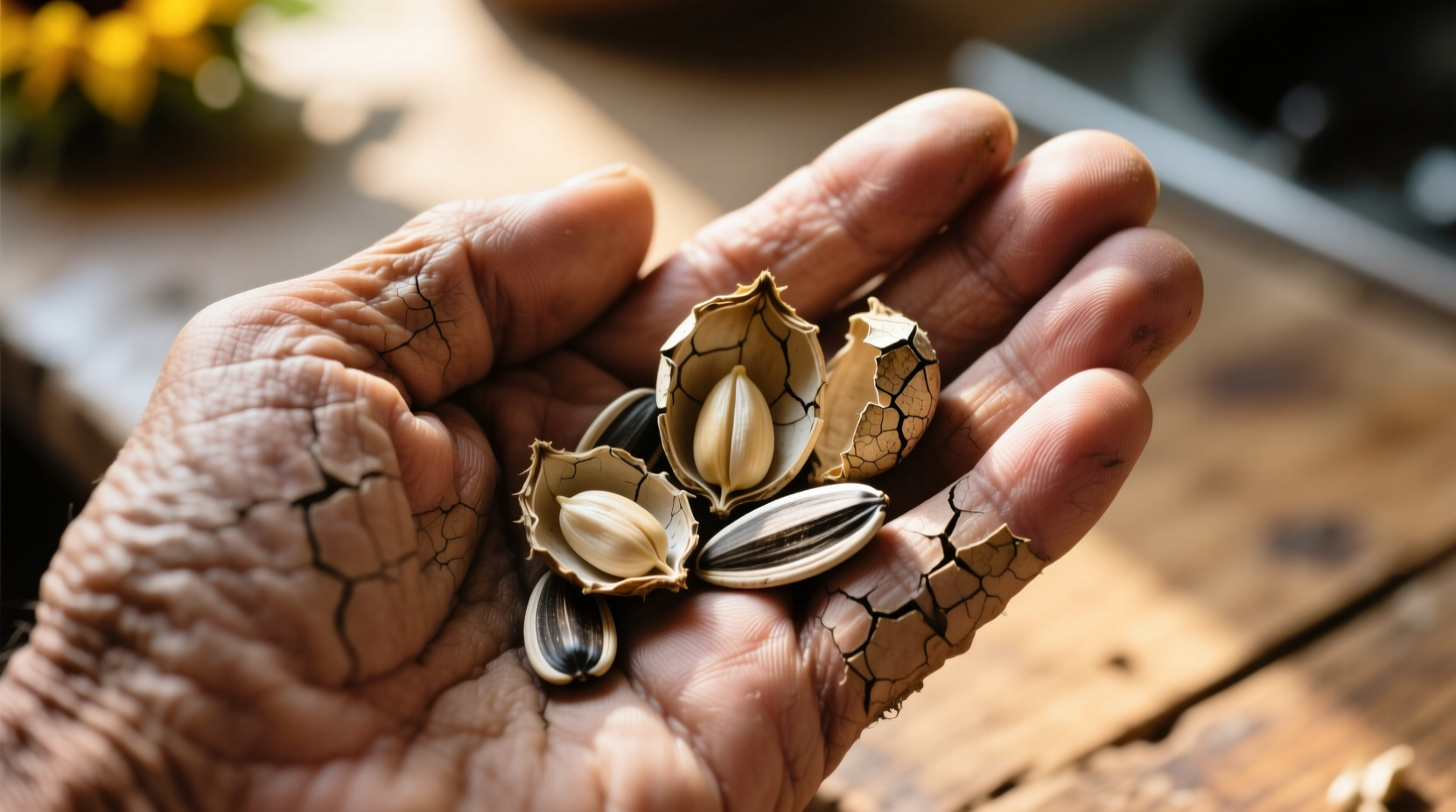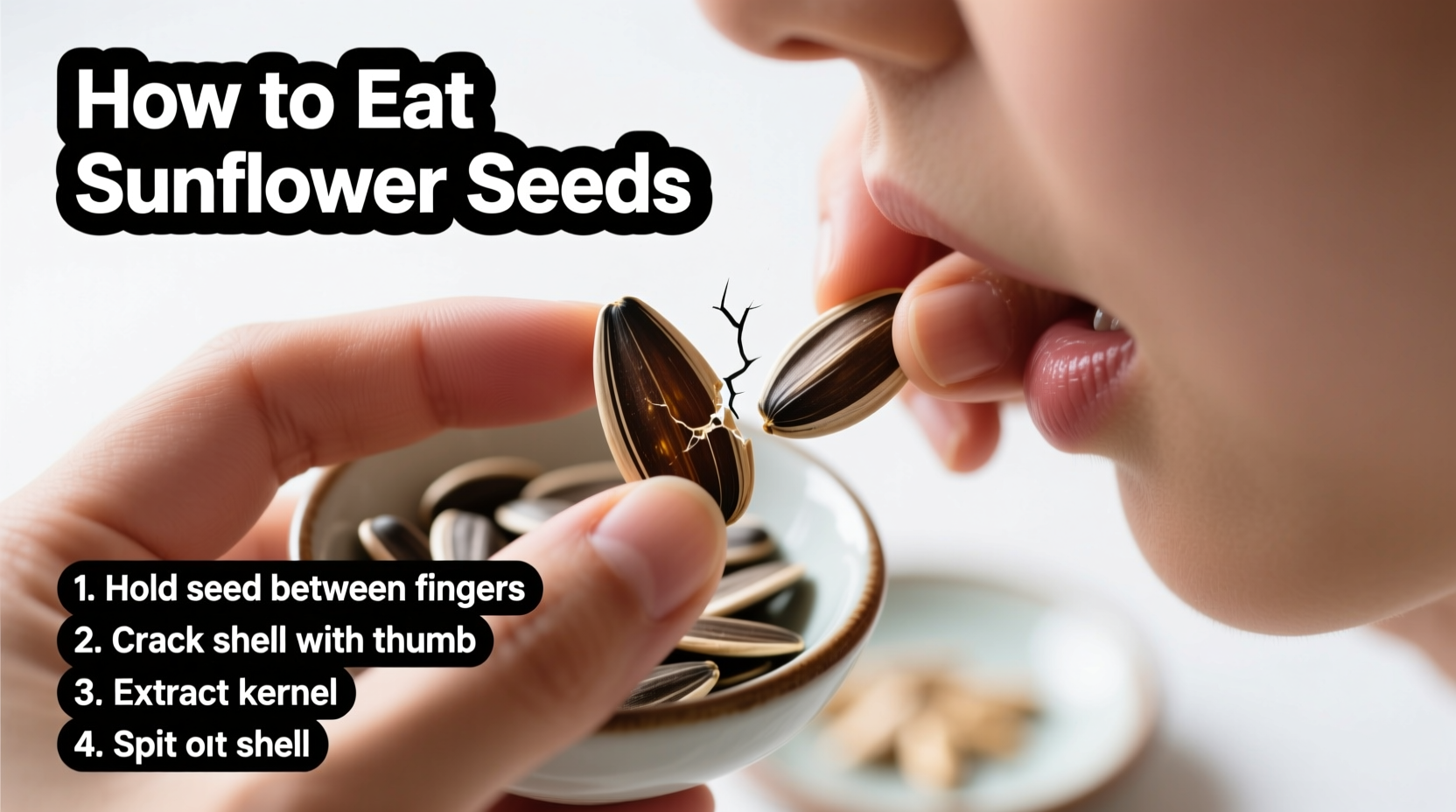The fastest way to eat sunflower seeds is to place a seed between your molars and gently crack the shell, then separate the kernel from the shell using your tongue before discarding the shell properly. For shelled seeds, simply enjoy them as a snack or incorporate into recipes. This guide reveals professional techniques for both in-shell and shelled varieties, including dental-friendly methods and culinary applications.
Mastering Sunflower Seed Consumption: Beyond Basic Snacking
Whether you're enjoying a casual snack at a baseball game or incorporating sunflower seeds into gourmet dishes, knowing the proper techniques makes all the difference. Sunflower seeds provide excellent nutrition - just one ounce delivers 5.5 grams of protein, 14 grams of healthy fats, and significant amounts of vitamin E, magnesium, and selenium according to USDA FoodData Central.
Understanding Your Sunflower Seed Options
Sunflower seeds come in two primary forms that require different eating approaches:
| Type | Characteristics | Best For |
|---|---|---|
| In-Shell | Black and white striped shells, requires cracking | Casual snacking, social settings, slow consumption |
| Shelled (Kernels) | Already removed from shells, ready to eat | Cooking, baking, quick nutrition, dental concerns |
The Traditional In-Shell Technique: Step by Step
Perfecting the art of eating in-shell sunflower seeds takes practice but becomes second nature with these professional tips:
Step 1: Proper Seed Placement
Place a single seed horizontally between your back molars. Avoid using your front teeth, which can cause unnecessary wear according to the American Dental Association. Positioning the seed sideways allows for even pressure distribution.
Step 2: Controlled Cracking
Apply gentle, even pressure until you hear a light crack. The ideal pressure cracks the shell without crushing the kernel inside. Many beginners use too much force, resulting in broken kernels and shell fragments.
Step 3: Separation and Extraction
Use your tongue to separate the kernel from the shell fragments. Move the kernel to the front of your mouth while keeping the shell pieces toward the back. This tongue manipulation technique is similar to what professional chefs use when working with other in-shell nuts.
Step 4: Shell Disposal
Spit the shell into a designated container rather than on the ground. For social settings, bring a small bowl or use the empty side of your snack bag. Proper disposal shows consideration for others and maintains clean environments.

Alternative Methods for Special Situations
Certain circumstances require modified techniques for eating sunflower seeds:
Dental-Friendly Approaches
If you have dental work or sensitivity, try these alternatives:
- Use your thumb and forefinger to gently squeeze the seed until the shell cracks
- Place seeds between your molars without biting down - use jaw pressure only
- Opt for pre-shelled seeds when dental discomfort occurs
For Children Learning the Technique
Teach children using these safety-conscious methods:
- Start with pre-cracked seeds to practice kernel extraction
- Use brightly colored containers for shell disposal to make it fun
- Supervise children under 4 due to choking hazards identified by the American Academy of Pediatrics
Safety Considerations and Best Practices
Following these guidelines ensures safe and enjoyable sunflower seed consumption:
Avoiding Common Hazards
Choking risks increase when eating too quickly or while distracted. The National Safety Council reports that seeds and nuts account for approximately 10% of choking incidents among adults. Always eat sunflower seeds while seated and fully focused.
Dental Preservation Tips
Regular consumption of in-shell seeds can cause enamel wear over time. The Journal of Prosthodontics notes that repetitive nut cracking contributes to tooth surface loss. Limit in-shell consumption to moderate amounts and consider alternating with shelled varieties.
Culinary Applications Beyond Snacking
Professional chefs utilize sunflower seeds in numerous creative ways:
Recipe Integration Techniques
Shelled sunflower seeds add texture and nutrition to various dishes:
- Toast seeds lightly in a dry pan for enhanced flavor before adding to salads
- Grind into "sun butter" as a nut-free alternative to peanut butter
- Use as a crunchy topping for roasted vegetables or grain bowls
Storage Methods for Maximum Freshness
Proper storage maintains quality and prevents rancidity:
- Store unopened in-shell seeds in cool, dry places for up to 2 months
- Keep shelled seeds in airtight containers in the refrigerator for 2-3 months
- Freeze kernels for up to 1 year without quality loss
Developing Your Sunflower Seed Expertise
Like any culinary skill, perfecting sunflower seed consumption takes practice. Start with small quantities and focus on one step at a time. Within a week of regular practice, most people develop efficient techniques that make enjoying this nutritious snack both pleasurable and practical. Remember that the goal isn't speed but rather developing a comfortable, sustainable method that works for your specific needs and circumstances.











 浙公网安备
33010002000092号
浙公网安备
33010002000092号 浙B2-20120091-4
浙B2-20120091-4